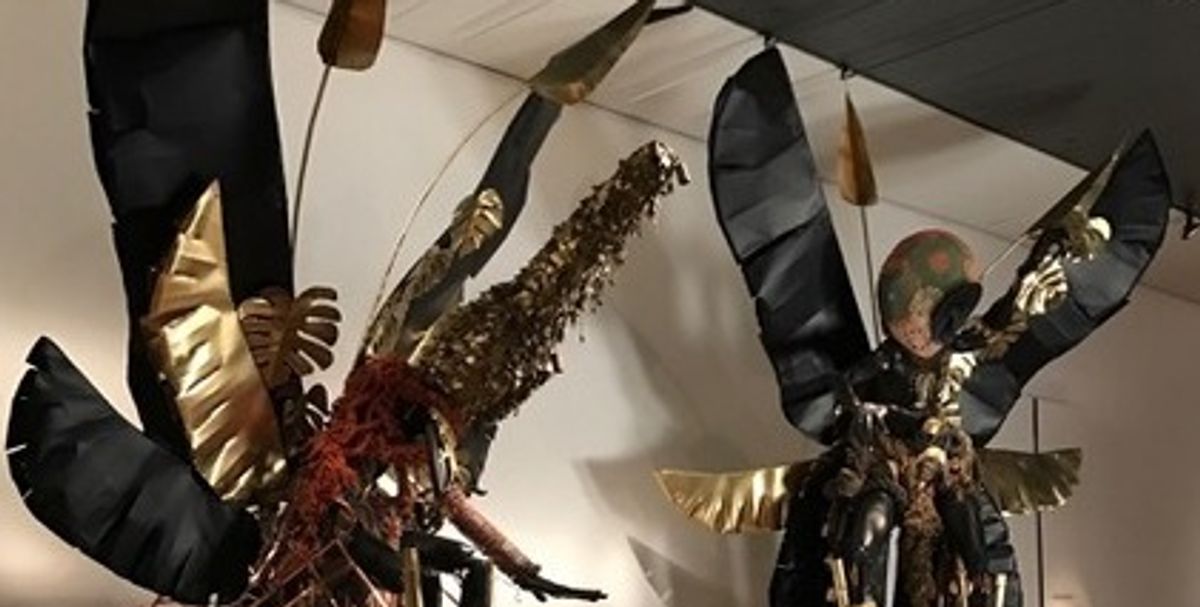The responsibility of being the first Caribbean artist to be commissioned by the British Museum (BM) is weighing heavily on Zak Ové. “Imagine representing the whole of the Caribbean in one moment?” he asks. “I have to get this right, otherwise I’ll never hear the end of it.”
Ové was speaking at the unveiling of his Moko Jumbie sculptures in the BM’s Africa Galleries on 30 March. The towering figures were installed in the museum’s Great Court in 2015 and have now become part of the permanent collection, displayed opposite a cabinet of masks made by, among others, the Yoruba and Igbo people of Nigeria, the Songye, Pende and Lega of the Democratic Republic of Congo and the Bamileke of Cameroon.
“It’s a homecoming. [My sculptures] are the children returning to their parents,” says Ové, who was born in London to an Irish mother and Trinidadian father.
Moko Jumbies, a term derived from a combination of African and Creole languages, are stilt-walkers who represent West African deities or spirits. With the shipping of slaves, the ritual was brought to the Americas where it was disguised in masquerade and incorporated into carnival celebrations.
The layered identities of the Moko Jumbie also appealed to Ové, who says he grew up “feeling like I was neither one thing nor the other”. Ové says his sculptures, which are made from found, cast and recycled materials, refer to the multitude of heritages found in Trinidad–among them Irish, Syrian and Chinese.
“It’s about bringing new world materials into dialogue with old world stories, and keeping that ancestry alive,” the artist says. “It’s also important to continue the conversation about the hundreds of millions of people living in the African diaspora. What does it mean to be an African abroad?”
Before becoming an artist, Ové made videos for musicians including Chaka Demus & Pliers, Lee Scratch Perry and PM Dawn. It was a natural fit for Ové, whose father Horace was the first black British film-maker to direct a feature-length film, Pressure, in 1975.
Like his father, Ové is blazing a trail, but one that feels long overdue. “You have to ask: why has it taken so long [to commission a Caribbean artist],” he says. “If it wasn’t for slavery and the sugar trade, we wouldn’t have some of the art institutions we have in London today.”


